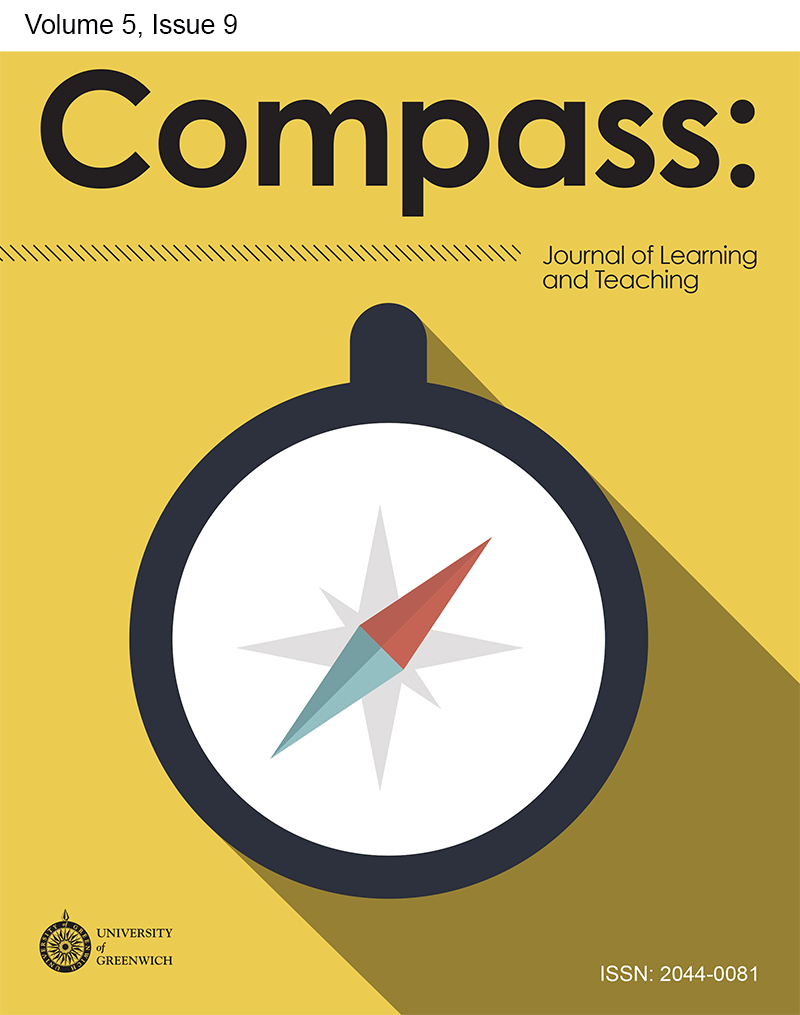Learning videos - do they work?
DOI:
https://doi.org/10.21100/compass.v5i9.114Keywords:
eLearning, Mobile Learning, Learning TechnologyAbstract
The videos which were subject of this investigation could be classified broadly as instructional videos, presenting processes or specialist machine introductions. As such, they can be referred to as a type of multimedia learning resources. This study compared staff’s views with the students’ perceptions of relevance and usability of a range of instructional videos. The use of videos and mobile digital technology was seen as an enabler of rapid access and self-guided learning, but overwhelmingly, tutors and students valued the face-to-face interaction as a prime enabler of learning. Further development of video resources should be based on the following key considerations: constructing the shortest visual and audio messages, identifying key meta-data to enhance reusability, adaptation of teaching and learning styles.
References
Beck, R. (2009). Multimedia teaching with video clips:TV, movies, YouTube, and mtvU in the college classroom. International Journal of Technology in Teaching and Learning. 5(1), pp.1-21
Choi, J. and Johnson S. (2005). The effect of context-based video instruction on learning and motivation in on-line courses. The American Journal of Distance Education, 19 (4) pp215-227
Duffy, T. and Cunnigham, D (1996). Constructivism: Implications for the design and delivery of instruction, as cited by Ritzhaupt, A. (2010). Learning objects systems and strategy: a description and discussion. Interdisciplinary Journal of E-Learning and Learning Objects. Vol 6 [On-line] Available at: http://www.ijello.org/Volume6/IJELLOv6p217-238Ritzhaupt701.pdf , (Accessed on: 25 March 2013)
Ellis, R. and Child, M. (1999) The effectiveness of video as a learning tool in on-line multimedia modules. Journal of Educational Media. Vol. 24, No 3.
Mayer, R.E. and Moreno, R. (2005). A cognitive theory of multimedia learning: Implications for design principles. [On-line] Available from http://www.unm.edu/~moreno/PDFS/chi.pdf.(Accessed on: 18 July 2012)
Nikoi, S. (2011) CORRE: a framework for evaluating and transforming teaching materials into open educational resources. Open Learning. Vol. 26, No 3, pp. 191-207
Richardson, J. (2012) Face-to-face versus on-line tuition: Preference, performance and pass rates in white and ethnic minority students, British Journal of Educational Technology, Vol.43 No 1, pp.17-27
Ritzhaupt, A. (2010). Learning objects systems and strategy: a description and discussion. Interdisciplinary Journal of E-Learning and Learning Objects. Vol 6 [On-line] Available at: http://www.ijello.org/Volume6/IJELLOv6p217-238Ritzhaupt701.pdf , (Accessed on: 25 March 2013)
Teng, Y. et al (2009). Create motivating YouTube videos: Using dual coding theory and multimedia learning theory to investigate viewer perceptions. [On-line] Available at: http://www.publicationshare.com/AERA _09_Youtube_0410_2009.htm,(Accessed on: 13 August 2012)
Verleur, R., Heuvelman, A. and Verhagen, P. (2011) Trigger Videos on the Web: Impact of audiovisual design, British Journal of Educational Technology. Vol 42, No 4, pp. 573-582
Yazrina, Y. and Yosoff, M. (2008). Towards a comprehensive learning object metadata: Incorporation of context to stipulate meaningful learning and enhance learning object reusability. Interdisciplinary Journal of E-Learning and Learning Objects. [On-line] Available at: http://www.ijello.org/Volume4/IJELLOv4p013-048Yahya185.pdf, Accessed on 10 August 2012)
Wiley, D.(2003) Connecting learning object to instructional design theory: A definition, a metaphor and a taxonomy. Available from: http://opencontent.org/docs/lo_do.pdf, (Accessed on 13 August 2012)
Wiley, D. (2003). Learning objects: Difficulties and opportunities. [On-line] Available from: http://opencontent.org/docs/lo_do.pdf, (Accessed on 13 August 2012)
Williams,D. (2000), Evaluation of Learning Objects and instruction using learning objects. [On-line] Available from: http://www.reusability.org/read/, accessed 20 April 2013.
Wang, M. and Shen, R. (2012). Message design for mobile learning: Learning theories, human cognition and design principles. British Journal of Educational Technology, vol. July 43, PT.4, pp.561-575
Downloads
Published
How to Cite
Issue
Section
License
Compass: Journal of Learning & Teaching provides immediate open access to its content on the principle that making research freely available to the public supports a more equitable global exchange of knowledge.
Works are released under the default licence of Creative Commons Attribution 4.0 International (CC BY), which provides unrestricted use, distribution, and reproduction in any medium, provided the original work is properly cited. If authors require a divergent licence, please contact the Scholarly Communications Manager at scholarlycommunications@greenwich.ac.uk.
Authors of articles published in Compass: Journal of Learning & Teaching remain the copyright holders to their published work and grant third parties the right to use, reproduce, and share the article according to terms of the Creative Commons license agreement applied to the work by Compass: Journal of Learning & Teaching.
Self-archiving policy: authors are permitted, and encouraged, to deposit any version of their article - submitted, accepted, and published versions - in subject and institutional repositories at any time.
If you have any queries about the choice of license, or which to discuss other options, please contact the Scholarly Communications Manager at scholarlycommunications@greenwich.ac.uk.



